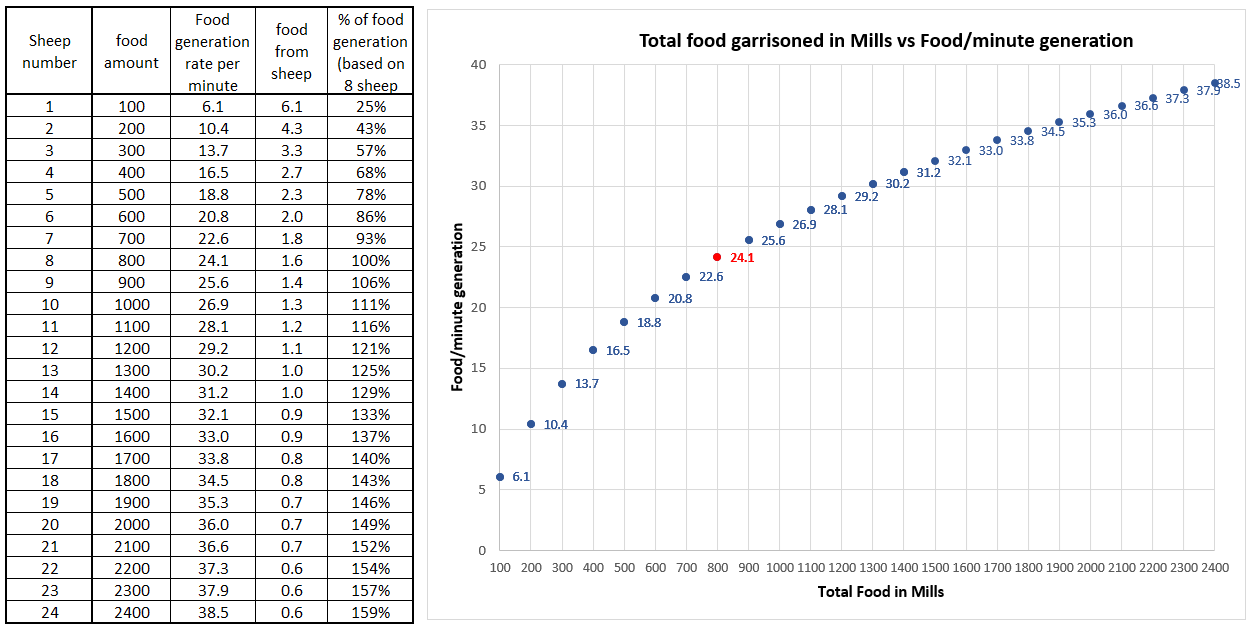Hello again gamers and history lovers!
The new DLC release is just around the corner so I will finish posting my Somali civilization design before I get immersed playing the new civilizations and campaigns. Just like my previous builds with the Zimbabweans and Swahilis, I aim to make my civ concept designs as historically grounded as possible while having an interesting and competitive playstyle; so that you really feel you are leading the actual civilization itself. I do wish we get an East African DLC after the Caucasus DLC, featuring the Swahilis, Zimbabweans, Somalis, and the Malagasy. I will design the Malagasy civ after this one, but would probably take long to finish given their sparse sources of info.
Check out my previous civ concepts if you haven’t yet ![]()
Swahilis: East African DLC - The Swahilis [concept] - #81 by Lakan247
Zimbabweans: East African DLC – Emporiums of Ivory and Gold - The Zimbabweans [concept] - #90 by Lakan247
As always, comment your thoughts about it below! ![]()
The Somalis
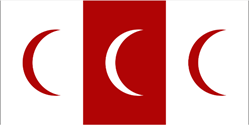
HISTORY:
The Somalis are a civilization inhabiting the Horn of Africa who are known to be pastoralists, seafarers, and one of the earliest non-Arabs that converted to Islam. They are extensive traders that dominated the Indian Ocean, and also left an impressive architectural legacy. Somali politics revolve around clan kinships, which are led by sultans or clan-leaders (garads). Arch-enemies of the Christian Ethiopians, the Somalis waged numerous devastating wars against them and their Portuguese allies in the name of Islam and to maintain control of the lucrative trade in the region. This civilization will represent and incorporate the characteristics of notable Somali states, and other peoples who were their ####### or under their influence:
Adal Empire (1415-1577) – a Somali empire that succeeded the Sultanate of Ifat in their relentless wars against the Christian Ethiopians. They first introduced gunpowder weapons to Africa after receiving support from the Ottomans, and thus were successful in conquering Ethiopian lands by defeating the combined strength of the Ethiopians and their Portuguese allies. Due to infighting, they would eventually lose ground to the Ethiopian Empire and the Oromo invasions, leading to its downfall.
Ajuuraan Empire (13th-18th century) – the only known hydraulic empire of Africa that dominated the Indian Ocean trade and successfully defending against Portuguese incursions and invasions by the Oromo. They had an impressive architectural legacy, with several fortresses, castles, necropolises, lighthouses, cisterns, and large limestone wells dotting Southern Somalia. Like the Adal Empire, they were a close ally of the Ottoman Empire who regularly aided them against the Portuguese.
Sultanate of Mogadishu (10th-16th century) – a Somali sultanate in Southern Somalia known to be the richest and most powerful in the region that maintained a vast trading network; even minting its own currency. It established diplomatic ties with Ming China, prompting Zheng He to travel and trade with the state. Like other coastal Somali city-states in region, it eventually became a vassal to the expanding Ajuuraan Empire.
Sultanate of Shewa (896-1289) – one of the first inland Muslim kingdoms in East Africa.
Sultanate of Ifat (1275-1403) – successor of Shewa, it was established by the Walashma dynasty that sparked the long conflict of the Somalis versus the Christian Ethiopians. It was succeeded by the Adal Sultanate.
Imamate of Aussa (1577-1734) – established by an Adal ruler after moving the capital of the declining Adal Empire to Aussa due to the threat of the Oromo invasions.
Hadiya Sultanate (13th – 15th century) – located south of Shewa, this Muslim kingdom was able to field large armies of infantry and cavalry. It was conquered by Ethiopia, but was continually rebellious. They were freed by Ahmad Gurey of Adal, but was later re-annexed into the Ethiopian Empire after their defeat in the Battle of Hadiya.
Warsangali Sultanate (1298-1887) – ruled by the Somali Warsangali clan in northern Somalia, it is recognized for its remarkable longevity due to prioritizing trade over expansionism.
Sultanate of Dankali (13th- 18th cen) – a Muslim sultanate ruled by the Afar people, adjacent to Adal.
Habr Maqdi, Majerteen, Marehan, Gadabuursi, Ogadeni, Isaaq, Dhulbahante – Somali clans that controlled their traditional territories in the Horn of Africa, who were sometimes a vassal or allied to the major Somali empires of Adal and Ajuuraan and played major roles in their wars against the Christians.
Zeila, Bale, Merca, Berbera, Barawa, Hafun, Galkayo, Bosaso, Botiala – important city-states and trading centers controlled by various Somali clans.
Harla, Sidama, Afar, Harari, Argobba, Oromo – peoples who were ####### or associated with the Somalis and thus would be represented by this civ.
Zeila
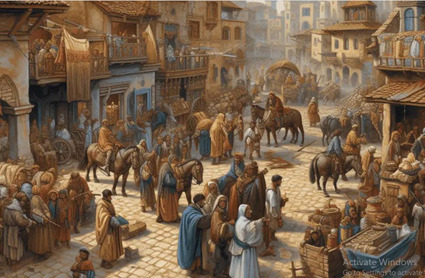
The Somalis
Naval and gunpowder civilization
Civilization Bonuses:
-fishing ships and transports ships affected by Wheelbarrow and Hand Cart (The Ajuuraan Empire was a hydraulic empire that monopolized the Shebelle and Jubba river systems through hydraulic engineering)
-get a free cow when building Mills and Markets (Somali economy was reliant on agriculture, trade, and pastoralism)
-Castles cost 10% less stone for each existing castle you own, max -50% (The Somalis had capable engineers and made many fortresses that dotted the land)
-towers get +1 line of sight, and an additional +1 for each upgrade; ships within your tower’s line of sight take 33% less bonus damage (Having one of the world’s oldest and busiest sealanes, lighthouses were constructed to ensure safe entry of maritime vessels into the port cities.)
Unique unit 1: Malassay (50f, 30g)– melee infantry armed with a billao/belawa sword. Attack bonus vs. scout cavalry line and eagle warrior class. Attack bonuses of this unit are doubled when near villagers, monks, and Garads. Can switch to a ranged attack mode as a gunpowder unit after researching Ottoman-Somali Pact. Can be trained at the Castle.
Passive Ability: Attack bonuses double when there is a villager, monk, and Garad within a 4-tile radius
Training time: 12 seconds
Melee mode:
Attack: 9, 12(elite) ; +11, 16(elite) vs. Scout cavalry line and Eagle-line
Hit Points: 65, 80(elite)
Armor: 1/1 ; Armor classes: infantry, unique unit
Speed: 1
Rate of Fire: 2
Gunpowder mode:
Attack: 15, 17(elite) ; +6, 9(elite) vs. Scout cavalry line and Eagle-line
Hit Points: 60, 75(elite)
Armor: 1/0 ; Armor classes: archer, gunpowder unit, unique unit
Speed: 0.9
Range: 5
Rate of Fire: 3.45
(The Malassay were the elite infantry of the Adal Empire that functioned as the basic unit of the army of the Imam)
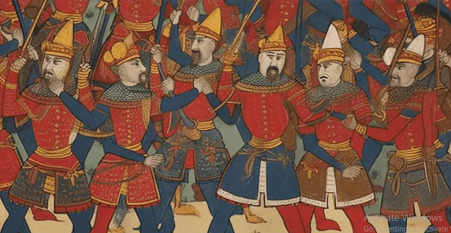
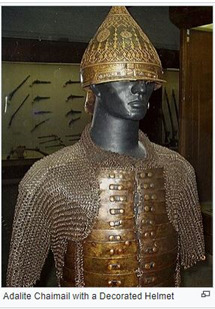
Unique unit 2: Garad (275f, 250g) – expensive and powerful mounted melee hero unit. Regenerates and cannot be converted. They have an aura that give bonuses depending on the unit type nearby. The amount you can train is limited to 1 plus the amount of Castles you own (no limit). They can change to a ranged attack mode as a mounted gunpowder unit after researching Ottoman-Somali Pact. Available to train in Town Centers in the Castle Age. They are automatically upgraded upon reaching Imperial Age.
Training Time: 100 seconds
Passive ability: Aura buff that also gives additional buffs to specific types of units
Aura radius: 8, 9 (Imp upgrade)
All military units (including ships): +15% attack speed
Melee Cavalry: +5 bonus attack vs. buildings
Melee Infantry: +20% movement speed
Gunpowder units: deal +40% more damage vs. military units with an attack range of # ## less
Ships: Take 33% less bonus damage
*Cannon Galleons are affected by both gunpowder and ship bonuses
*Malassays and fellow Garads are only affected by one specific bonus at a time, depending on their current attack mode
STATS
Melee mode:
Attack: 18, 20 (Imp upgrade)
Hitpoints: 220, 260 (Imp Upgrade)
Armor: 2/2, 3/3 (Imp upgrade); Armor classes: cavalry, unique unit
Speed: 1.35
Rate of Fire: 2
Gunpowder mode:
Attack: 18
Hitpoints: 200
Armor: 2/2 ; Armor classes: archer, cavalry, cavalry archer, gunpowder unit, unique unit
Speed: 1.3
Rate of Fire: 2.9
Range: 6
(The garads were Somali clan leaders that led their forces in battle. Somali rulers had to keep the garads united since they are often at odds with each other)
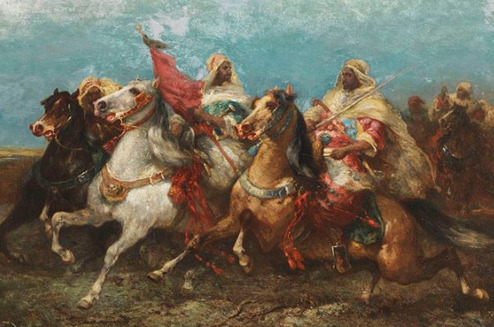
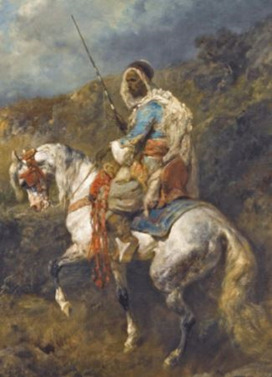
Regional Unit (East Africa): Assegai Ambusher (45w, 50g) – regional unit for East African civs, accessible at the Archery Range at the Castle Age. Fast moving skirmisher unit with high pierce armor that throws an assegai spear. Attack bonus vs. cavalry. Good vs. cavalry and archers. Bad vs. skirmishers, infantry, siege units.
Attack: 3, 4 (elite) ; +4, 5(elite) vs. cavalry
Armor: 0/4, 0/5 (elite) ; Armor classes: Archer, Skirmisher
Hit Points: 40, 50 (elite)
Range: 4, 5(elite)
Speed: 1.1, 1.2 (elite)
*The Assegai Ambusher is designed to replace the Cavalry Archer for the East African civilizations, since they don’t get the Cavalry Archer for historical and design purposes.
(The assegai is a light pole weapon used for throwing which had widespread use throughout Africa)
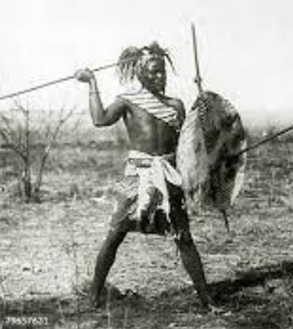
Castle Age UT: Gashan – Assegai ambushers, melee infantry and cavalry gain +2 pierce armor, and +3 attack vs. archers (The gashan is a Somali shield that can also be used offensively.)
Imperial Age UT: Ottoman-Somali Pact – gunpowder units and Garads cost 40% less gold; Malassays and Garads can now switch to melee and gunpowder attack modes.
(The Ottomans had strong alliances with the Somali empires of Adal and Ajuuraan, constantly providing them gunpowder support in their wars against the combined forces of their arch-enemies, the Christian Ethiopians and the Portuguese)
Team Bonus: Trade Cogs move 15% faster and have reduced collision size
(The Somalis, even since antiquity had a long tradition of seaborne trade that connected the region’s commerce as far as India, Persia, Malacca, China, and even Venetia. They used their fast and unique sewn boat called the Beden.)
Missing units/technologies:
Barracks – Champion, Gambesons, Halberdier
Archery Range - Arbalest, Cavalry Archer, Parthian Tactics, Thumb Ring
Stable – Paladin, Hussar
Blacksmith – Leather Archer Armor
Monastery – Atonement, Block Printing, Heresy
Siege Workshop – Siege Onager
University – Siege Engineers
Castle – Sappers
STRATEGY
Strong points: Gunpowder, Navy, Defense, Cavalry, Infantry, Naval Trade
Lackluster/Weak points: Archers, Siege, Monks, Trash wars
The Somalis are a naval and gunpowder focused civilization and therefore would excel on water/hybrid maps, as well as in the late game. Therefore, they must survive early aggression and secure their economy to support their gunpowder, cavalry, infantry, and Garad armies by late game. The Somali gameplay revolves around the use of their unique unit, the Garad, who were historically integral to the success of their armies. The bonuses to their infantry, cavalry, and gunpowder units are tied to this unit that functions like a Centurion, but with stronger stats and buffs, although a lesser aura range. So to fully take advantage of this civ’s strengths, a Somali player must deploy their Garads safely and effectively with good micro.
Dark to Feudal Age: You get a modest eco boost with a free Cow once you build your mill, and another one in Feudal once you build you Market, which can help with fielding military early on. In water or hybrid maps where you have a fishing eco, try to get Wheelbarrow as soon as possible since this will also make your fishing ships more efficient, especially when the fish are starting to get farther. If your fishing eco is being raided, build towers in strategic places for protection, which will also boost your naval military ships nearby.
Castle Age: The Castle Age is when you start making use of your civ’s strengths. Your best military options you have are Knights, Camels, Infantry, and Assegais since your archers lack thumb ring and second armor tech. Although archers and monks can still be a decent choice if the situation calls for it.
Your Castle Age UT will give your cavalry, infantry, and assegais a chance to effectively counter archer civs and improve your raiding capabilities; since you lack good skirmishers. Their unique unit, the Malassay, is a great unit to guard your growing eco against light cavalry and eagle raids, given that their bonus damage doubles when near villagers. They are also great at guarding your monks when you go for relics or a monk rush.
During this age, you have to develop and secure your food eco to support your food-reliant army composition in the late game. Besides your Malassays, your Castles getting progressively cheaper can also help with securing your base and positions in the map. Finally, their other unique unit, the Garad, is a power unit that you want to field as soon as possible to access your power spike. However, their high cost and exceptionally long training time means you will get them at late Castle Age at best, since you do not want to delay your Town centers producing vills early on. If you are going for an aggressive approach, then you must use your Garads along with your cavalry and infantry to raid and snipe vills and Town Centers. In naval battles, you must pick fights with your fleet near your towers and Garads as much as possible to take advantage of the bonuses you will get.
Imperial Age: By Imperial Age, since you lack good archers and siege, you are reliant on gunpowder units for your backline damage output. But since you lack the 2nd archer armor, your hand cannoneers are fragile against ranged units so you must also support them with a front line of cavalry or infantry. Their Imp Age UT will help you field more gunpowder units as well giving your Malassays and Garads the flexibility of switching between two forms. Switching to Gunpowder Form will be necessary when your Malassays are facing good melee units such as Teutonic Knights or Samurais; or when your Garads are facing pikes; so you can get the gunpowder attack boost against them. But if you are facing archers, it is best to switch them to melee form to benefit from melee techs such as Gashan, being more durable and better in raiding. With your cheaper gunpowder units that also get an attack speed boost and attack bonus vs. low-range units in the presence of a Garad, you will obliterate your opponent’s front lines; then you get to charge your cavalry in and all the way to your opponent’s base. To conclude, you really must field a diverse army to cover the weaknesses of your units.
If you cannot close the game before gold runs out, you will have trouble in trash wars since your skirms are fragile, and you lack hussar and halberdier upgrades. But if you manage to keep your Garads alive, then you will get immense value with them.
In water maps/hybrid maps, the Somalis actually have no advantage in open sea battles, and must rely on the buffs that their towers and Garads give to their ships when within their aura range. Thus, they shine better in hybrid maps like Nomad or Highland. In team game water maps, their team bonus will incentivize your entire team to go maritime trading with your more efficient Trade Cogs, provided they are protected by towers along the shore.
The Somalis unlike other civs, have a playstyle that revolves around proper positioning of your armies and your hero-like units to maximize the military bonuses and their synergies with each other. Such a playstyle will require good micro and positioning, which is more challenging, but definitely more fulfilling. As a Somali player, you must deploy your battalions led by your Garads strategically, and be victorious against your enemies to continue the legacy of the Somali jihads told in tales.
Possible Wonders:
Arba’a Rukun Mosque

Fakr Ad-Din Mosque
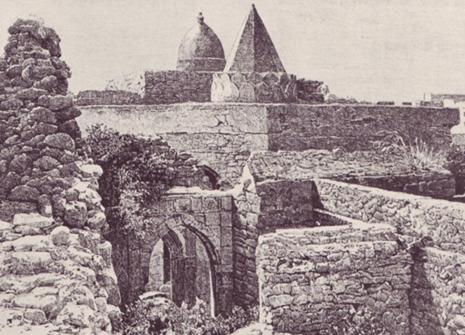
Possible Castle models:
Gondershe Citadel

Mogadishu old structure
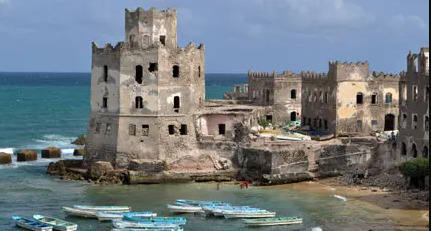
AI player names:
Sabr ad-Din III – an heir of the fallen Ifat Sultanate that became the first sultan of Adal after returning from Yemen and reclaiming his father’s realm from the Christian Ethiopians
Ahmad ibn Ibrahim al-Ghazi/Ahmad Gurey- popular military de facto leader of the Adal Sultanate who pioneered use of gunpowder in the region which was supplied by the Ottomans. He was a charismatic leader and successfully conquered half of Ethiopia. About the fully conquer the empire, he was stopped by Portuguese intervention and was killed in battle.
Matan bin Uthman – a garad military commander that was known as the bravest Adalite general leading decisive battles against Ethiopia
Jamal ad-Din II – third sultan of Adal that amassed the largest army Adal has ever seen, successfully invading Ethiopian lands and killing Ethiopian Emperor Yeshaq
Badlay ibn Sa’ad ad-Din II – fourth sultan of Adal that was able to expand the empire as far the port of Suakin in Sudan.
Imam Mahfuz – an emir and imam of Harar that repeatedly invaded Abyssinian territory causing the deaths of two Ethiopian Emperors. He became sultan of Adal due to his popularity, but was eventually defeated and killed by Ethiopian Emperor Sarsa Dengel.
Muhammad Gasa – last ruler of Adal and founder of the Imamate of Aussa
Amir Haboba – first ruler of Shewa Sultanate
Sulṭān Umar Walasma – founder of the Walashma dynasty of the Sultanate of Ifat
Haqq ad-Din I – sultan of Ifat that initiated aggression towards Abyssinia
####### Ad-Din** – founder of Mogadishu Sultanate
Sarjelle Gareen – a member of the Gareen dynasty that ruled the Ajuuraan Empire
Garad Mahiko – ruler of Hadiya Sultanate that rebelled against the Ethiopian Emperor
Garad Dhiidhin – founder of the Warsangali Sultanate
Garad Ahmed bin Hirabu – a commander from the Somali Marehan clan who is the closest deputy of Ahmad Gurey, helping push back the Ethiopians
Possible campaigns:
- Ahmad Gurey and the Adal-Abyssinian Wars
- Sabr ad Din III’s return to Africa to establish the Adal Empire
####################################################################
Sources:
Wiki articles
http://www.forensicfashion.com/1900SomaliWarrior.html
########################################################### https://dbpedia.org/page/Hadiya_Sultanate

